Heat is Watch Sukeban Deka: The Movie Onlinean inevitable byproduct of work. It's generated when you start a car's engine, go for a brisk walk or anything else that generates friction. Heat is also prevalent in electronics where it can be more difficult to manage and can be detrimental to their continued operation. When it comes to graphics cards there are many ways to manage heat, from passive cooling, to fans and even water. But when these solutions aren't working, your GPU has one more way to beat the heat: thermal throttling.
When your GPU takes on a heavy workload, such as gaming, it generates a load of heat. When your cooling solution can no longer dissipate heat fast enough to keep temperatures within a safe range, your graphics card starts to dump performance to shed heat. The core and memory frequencies begin to drop---along with your framerates---until temperatures drop to a safe operating range. All modern GPUs have this feature in place to protect the electronic components from damage. Unmanaged, thermal throttling can have a big impact on performance. And, while thermal throttling itself doesn't cause any damage, the underlying cause of throttling, heat, can cause damage and shorten the lifespan of your video card.
In order to maintain performance, you need to control heat, but not all graphics cards experience throttling to the same degree, or even at all. There are a variety of scenarios that determine the impact thermal throttling has on your system. Case selection, cooling solution, and airflow are the three main factors to take into consideration.
A small case with no open space traps heat and inhibits airflow, which makes it harder to keep your GPU cool. Choosing a larger, well laid out case can provide more fan mounts and options to optimize airflow. Being able to mount additional fans in your case is especially beneficial if your GPU manufacturer has used a custom cooling solution that dissipates heat into your case instead of directly removing it, like with reference designs.
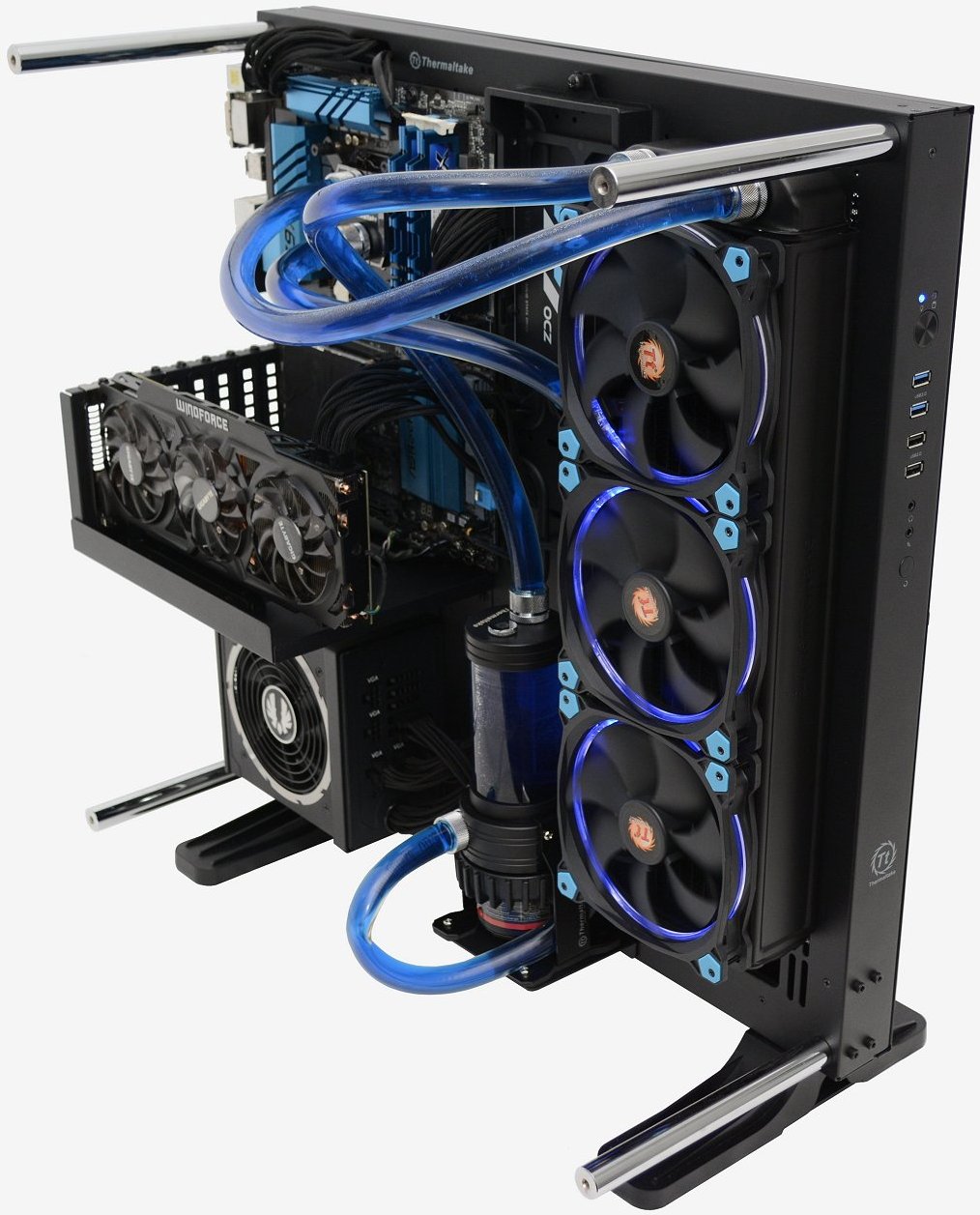
Adding additional fans to the top of your case ensures that heat generated by your GPU is removed from the case efficiently. It also lowers air temperature inside of your case keeping other components, such as your CPU and memory, much cooler.
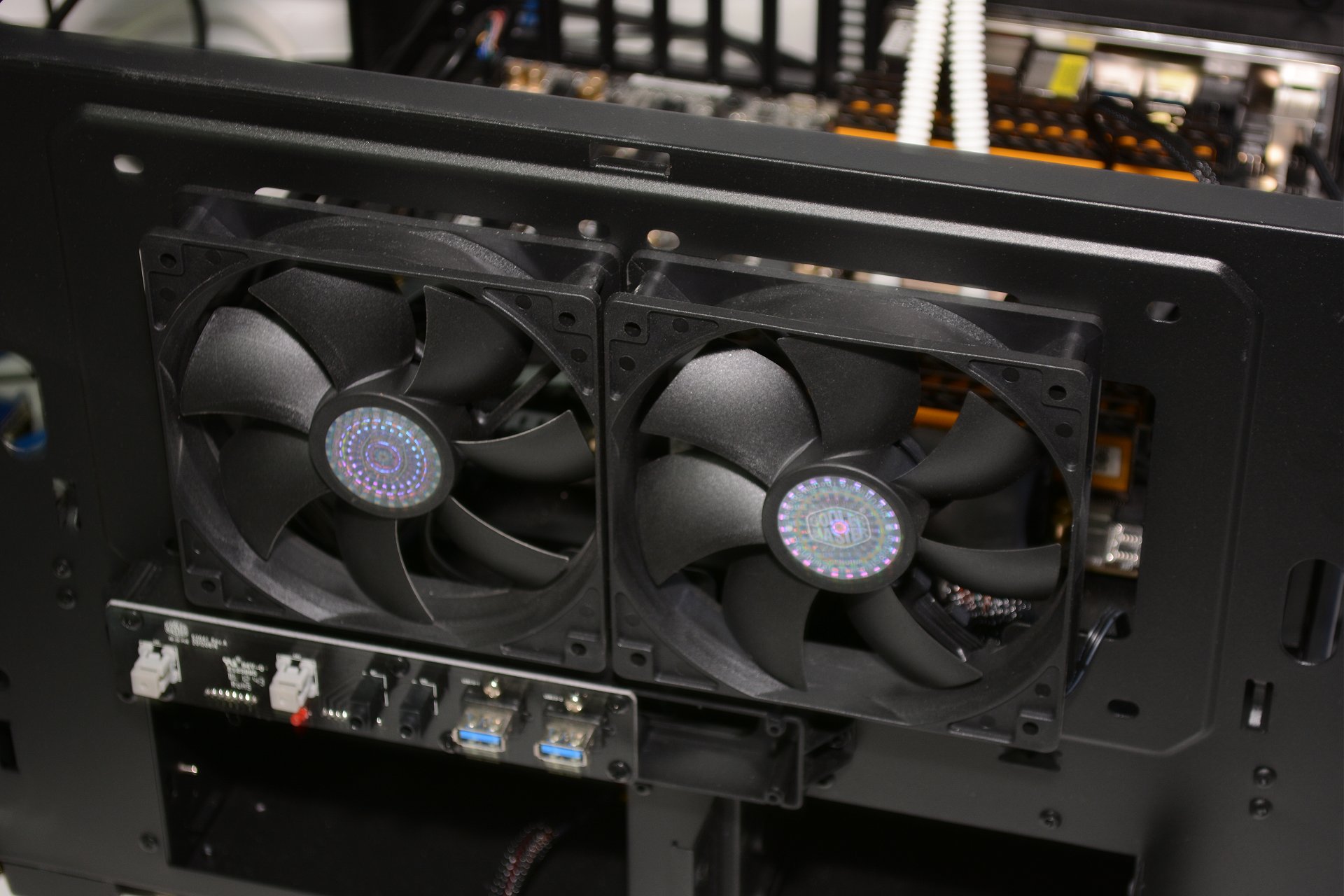
The brand of graphics card you choose may come down to personal preference, but the cooling solution it uses is an important decision. Reference designs---which are blower-type fans---typically use a single fan to keep the card cool. Cool air is drawn through the rear of the graphics card and exhausted out of the end with the connectors. This design is efficient but the single fan holds back performance.
When choosing a graphics card, it's often ideal to pick one with a multi-fan cooling solution. The additional fans---sometimes as many as three---provide enough airflow to significantly reduce or even eliminate throttling. It should be noted that your case needs to provide enough airflow to handle the hot air pumped out by these types of graphics cards as their coolers do not directly remove the heat from the case.
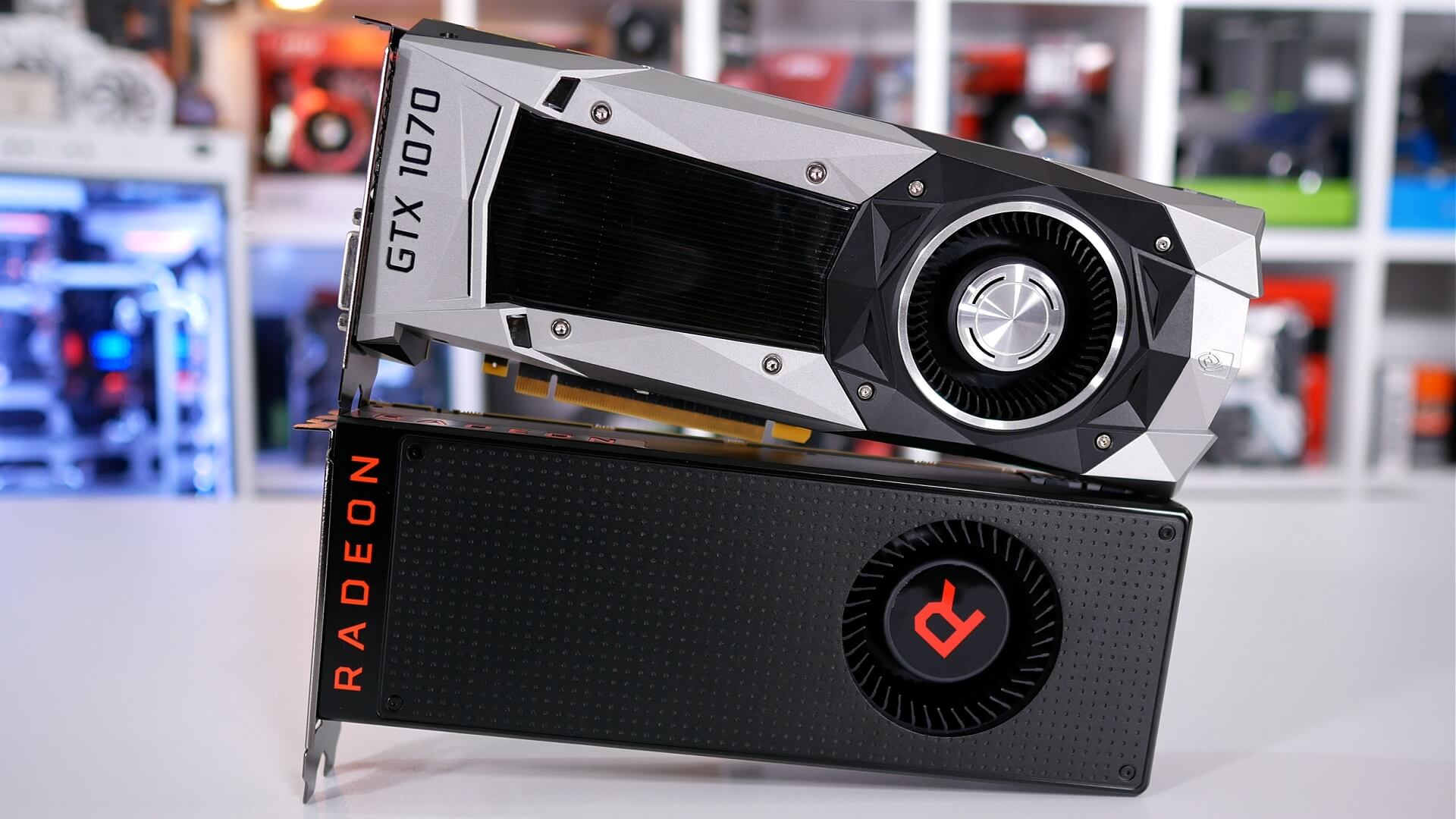
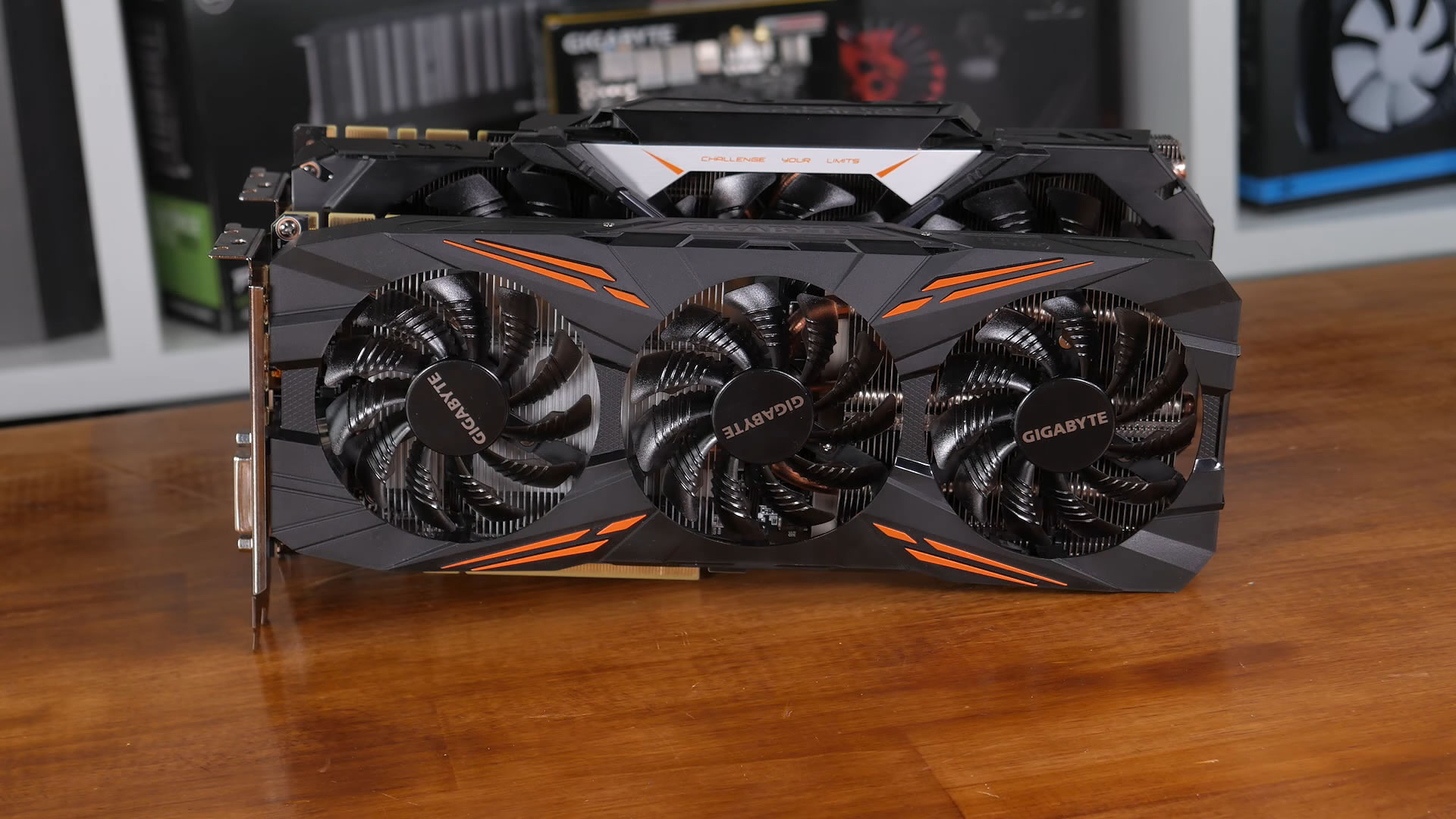
If changing or adding hardware is not an option, you can still reduce temperatures using freely available tools.
With utilities like MSI's Afterburner or EVGA's PrecisionX, a custom fan curve can be configured. By setting the fan curve manually, you can set the fan speed for a given temperature to something a bit more aggressive. From the factory, the fan speeds are optimized to strike a balance between noise and performance. With reference cards, this balance often leans more towards noise suppression and can lead to thermal throttling.
Noise levels will increase, perhaps significantly, but your GPU will be able dissipate heat much faster and maintain performance.
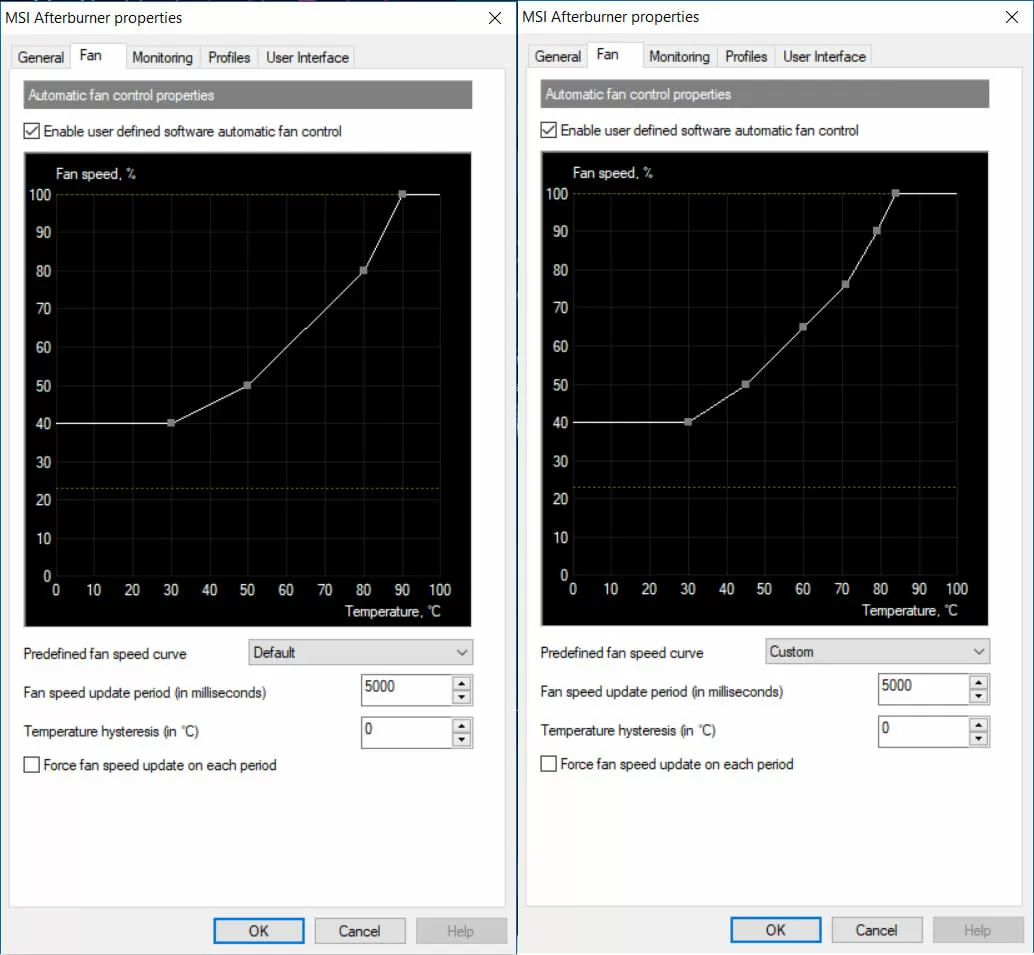
Default Left, Custom Right
If the additional fan noise is too much to handle, there is one more solution to your thermal throttling woes: undervolting.
Sometimes the amount of voltage your card uses is set higher than it needs to be to allow your card to function correctly. Running at a higher voltage generates more heat even if the clock and memory speed remain the same. Undervolting your graphics card by even a small amount can lower temperatures enough to reduce or even eliminate thermal throttling. However, this isn't a guaranteed solution and can cause stability issues. For most users, we recommend a combination of better cooling in conjunction with fan-curve adjustments.
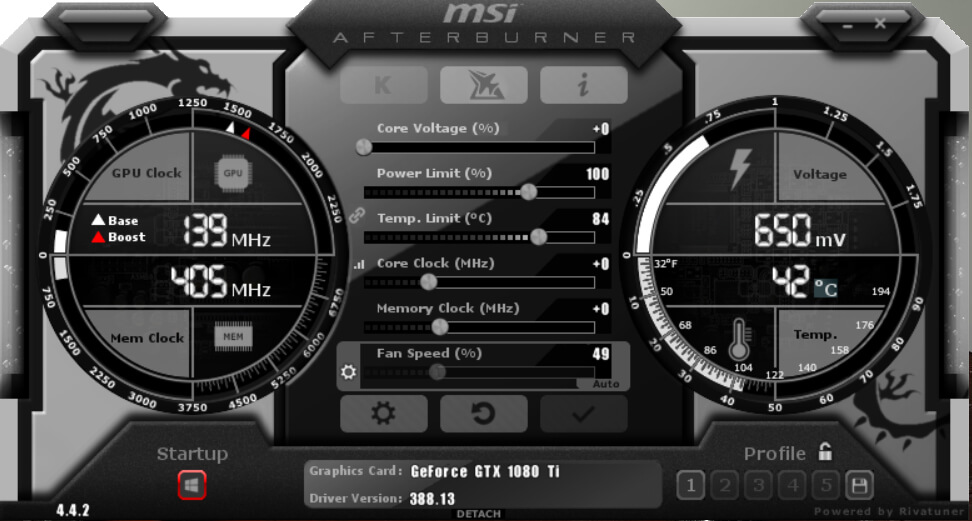
Most monitoring tools are capable of more than just controlling GPU fans and altering voltage. They also monitor temperatures, core and memory frequencies, along with GPU usage. Most of them also offer at least basic overclocking capability. This is important because your can't prevent something that you can't see.
Monitoring your GPU's temperature, along with core and memory frequencies, allows you to determine when you're experiencing throttling. It's important to note that there are a few things to look for before you need to break out the utilities. If you are experiencing stuttering or notice a visible drop in frame rate, it's likely that your video card has slowed down to shed heat. If you haven't altered your video card's fan curve and the fan is starting to sound like a jet engine, there is a good chance you've hit the throttling point. You can then confirm this with the tool of your choice.
If your temperature exceeds your graphics card's throttling point and your frequencies start to drop, you know it's time to look at your cooling. Ideally you want temperatures to be as low as possible, anything below 80 degrees is normal and should keep throttling in check. Nvidia's GTX 1080 Ti, for example, has a throttling point of 84 degrees. If you keep the temperature below 80 degrees you leave yourself with a bit of breathing room, so you can focus on having fun instead of monitoring GPU frequencies.
It's important to remember that every graphics card has a different throttling point. The previous-gen GTX 980 and 970, for example, throttle at 80 degrees, while AMD's Vega series cards can reach a maximum temperature of 85 degrees before they throttle. You will need to find out the throttling point for your specific card in order to set an effective fan curve and voltage.
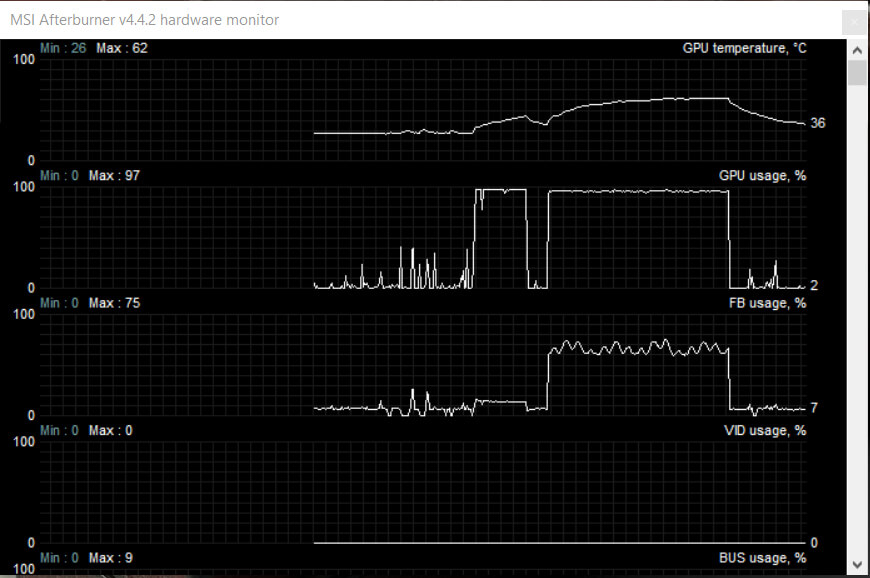
When deciding which utility to use, it's important to consider the scope of what you are going to be monitoring. If you are going to focus on your graphics card, then I recommend MSI's Afterburner or Asus Tweak. Either of these tools will provide all the monitoring and configuration options you could possibly need, including overclocking.
If you want to monitor your whole system, you'll need to look at something else, such as NZXT's Cam software. While Cam does monitor your entire system, it doesn't offer as many options for tweaking your graphics card. It doesn't hurt to install more than one utility to get a wider range of monitoring features.
 Astronomers saw one galaxy impale another. The damage was an eye
Astronomers saw one galaxy impale another. The damage was an eye
 Stanford vs. Notre Dame football livestreams: kickoff time, streaming deals, and more
Stanford vs. Notre Dame football livestreams: kickoff time, streaming deals, and more
 TikTok knows it's harming teen mental health, internal documents show
TikTok knows it's harming teen mental health, internal documents show
 Kansas State vs. Colorado football livestreams: kickoff time, streaming deals, and more
Kansas State vs. Colorado football livestreams: kickoff time, streaming deals, and more
 NYT Connections hints and answers for April 14: Tips to solve 'Connections' #673.
NYT Connections hints and answers for April 14: Tips to solve 'Connections' #673.
 'Daddy's Head's disturbing ending, explained
'Daddy's Head's disturbing ending, explained
 Fidelity data breach compromises more than 77,000 customers
Fidelity data breach compromises more than 77,000 customers
 Best Roomba deal: Get the self
Best Roomba deal: Get the self
 Apple is reportedly still working on smart glasses of some kind
Apple is reportedly still working on smart glasses of some kind
 Jaguars vs. Bears 2024 livestream: How to watch NFL for free
Jaguars vs. Bears 2024 livestream: How to watch NFL for free
 How to Settle Down with Dystopia
How to Settle Down with Dystopia
 Finland vs. England 2024 livestream: Watch UEFA Nations League for free
Finland vs. England 2024 livestream: Watch UEFA Nations League for free
 NYT mini crossword answers for October 12
NYT mini crossword answers for October 12
 NYT Strands hints, answers for October 14
NYT Strands hints, answers for October 14
 Best headphone deal: Take 22% off the Sonos Ace at Amazon
Best headphone deal: Take 22% off the Sonos Ace at Amazon
 Texas vs. OU football livestreams: kickoff time, streaming deals, and more
Texas vs. OU football livestreams: kickoff time, streaming deals, and more
 NYT Connections Sports Edition hints and answers for October 14: Tips to solve Connections #21.
NYT Connections Sports Edition hints and answers for October 14: Tips to solve Connections #21.
 NYT Connections Sports Edition hints and answers for October 14: Tips to solve Connections #21.
NYT Connections Sports Edition hints and answers for October 14: Tips to solve Connections #21.
 Samsung Unpacked stream is set for May 12, 2025
Samsung Unpacked stream is set for May 12, 2025
 Best Bluetooth speaker deals: Several live after Prime Big Deal Days
Best Bluetooth speaker deals: Several live after Prime Big Deal Days
Inter Milan vs. Arsenal 2024 livestream: Watch Champions League for freeBest ANC earbuds deal: Save $70 on Bose QuietComfort Ultra EarbudsNYT Strands hints, answers for November 6Best AirPods deal: Save $10 on Apple AirPods 4NYT Connections hints and answers for November 7: Tips to solve 'Connections' #515.Best gaming laptop deal: Get $270 off Lenovo Ideapad 1Inter Milan vs. Arsenal 2024 livestream: Watch Champions League for freeBest monitor deal: BOGO Acer gaming monitor and PC at Best BuyBest monitor deal: BOGO Acer gaming monitor and PC at Best BuyWordle today: The answer and hints for November 6Best free AI courses you can take onlinePaolini vs. Zheng 2024 livestream: Watch WTA Finals for freeBest TV backlight deal: Get 29% off Govee TV backlightsBest Apple charger deal: 36% off Apple MagSafe ChargerAn influencer was disqualified from the NYC Marathon for bringing a filming crew onto the courseNYT Connections Sports Edition hints and answers for November 8: Tips to solve Connections #46.How to unblock xHamster for freeBest early Black Friday selfSony INZONE H9 wireless gaming headphones deal: Get 34% off at AmazonPS5 Pro reviews: Top 3 complaints about the new console These good dogs don't know how to feel about fidget spinners How to watch Fourth of July fireworks at home BBC reporter accidentally drops the c Google is hosting a virtual smart home event on July 8 Comedian trolls the internet by 'naming his son' fidget spinner Hey Comey, here's what Trump has to say about those tapes LinkedIn says its extra intense clipboard snooping in iOS is a bug UK's chaotic general election was a historic moment for women Dark Sky mercifully gives Android users 1 more month until shutdown New CDC study shows just how serious a threat Zika is to pregnant women One wild chart shows intensity of this year’s Arctic Circle fires Man in giant fish finger outfit beautifully upstages politician Parrot launches $7,000 drone for thermal surveillance, search Smirnoff slams Trump's Russia relationship in punchdrunk, brilliant ad campaign Let night owls be night owls: How the pandemic could dethrone the larks I have drawn the Trump administration as Sonic the Hedgehog and I am ready to answer for it The 10 best on TwoSeven review: Group streaming for all of your favorite services Facebook bans far right ‘Boogaloo’ accounts from its platform WhatsApp adds new video chat, QR code features
2.0847s , 10156.59375 kb
Copyright © 2025 Powered by 【Watch Sukeban Deka: The Movie Online】,Feast Information Network